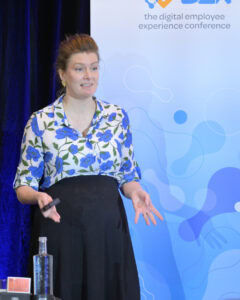
Different professions from Shutterstock
Filed under: Articles, Digital workplace, Intranets
There is no one-size-fits-all solution for meeting the needs of staff. Beyond the broadest level, the information needed by staff is not generic. Someone working in HR has quite distinct needs from a staff member in finance, the call centre, or in the sales team.
This is why organisations are progressively implementing personalisation or segmentation features as part of their corporate intranets or portals.
While the functionality that can be implemented varies greatly, there is a single goal: to better target information to the specific staff who need it.
In practice, there are three main ways of segmenting staff needs for information, with a number of secondary considerations.
Three primary facets
There are three main aspects (or ‘facets’) that can be used to segment staff needs for information:
- job role
- business unit
- geographic location
Job role
This is the most common way to segment staff needs, based on the jobs they perform, recognising that different job roles have distinct information needs. For example, a nurse has little in common with an administrator, engineer, call centre operator or sales person.
The seniority of a staff member is also a consideration, as managers and CEOs have different needs from operational staff. (For example, managers would need a range of HR performance management content.)
While this is the most obvious of the facets, it is potentially the hardest one to manage, due to the large number of job roles in any given organisation.
A considerable amount of research needs to be conducted to identify the specific needs of each job role, before this type of segmentation can be implemented. Resources then need to be devoted to categorising all information for the targeted job roles.
Business unit
Information can also be segmented according to the area of the organisation that a staff member belongs to. This can take place at many different levels, including division, business unit and team.
For example, information can be targeted to the ‘consumer products division’, as well as to the ‘personal credit cards unit’ within it.
This type of segmentation is most often seen when implementing news channels, and the required information can potentially be drawn from back-end HR systems or the staff directory.
Geographic location
The last of the three main facets is geography: where a staff member is located. Geography affects how the organisation works, including the underlying legislation, business rules or mix of products and services.
At a simpler level, this also relates to the differing staff services offered in each location. Regional staff have little interest in the head office cafeteria menu.
This is clearly a major consideration for multi-national companies, but should also be addressed by any company whose offices are scattered across multiple sites.
Secondary facets
Beyond the three core facets explored above, there are many secondary facets, including:
- project
- nature of employment
- type of customers interacted with
- professional interests or activities
- specific skills or knowledge
- personal interests or hobbies
- length of time with the organisation
While these are considered secondary to the three main facets, they may be very significant in specific organisations or situations. (For example, project is one facet that dominates the way some organisations operate.)





